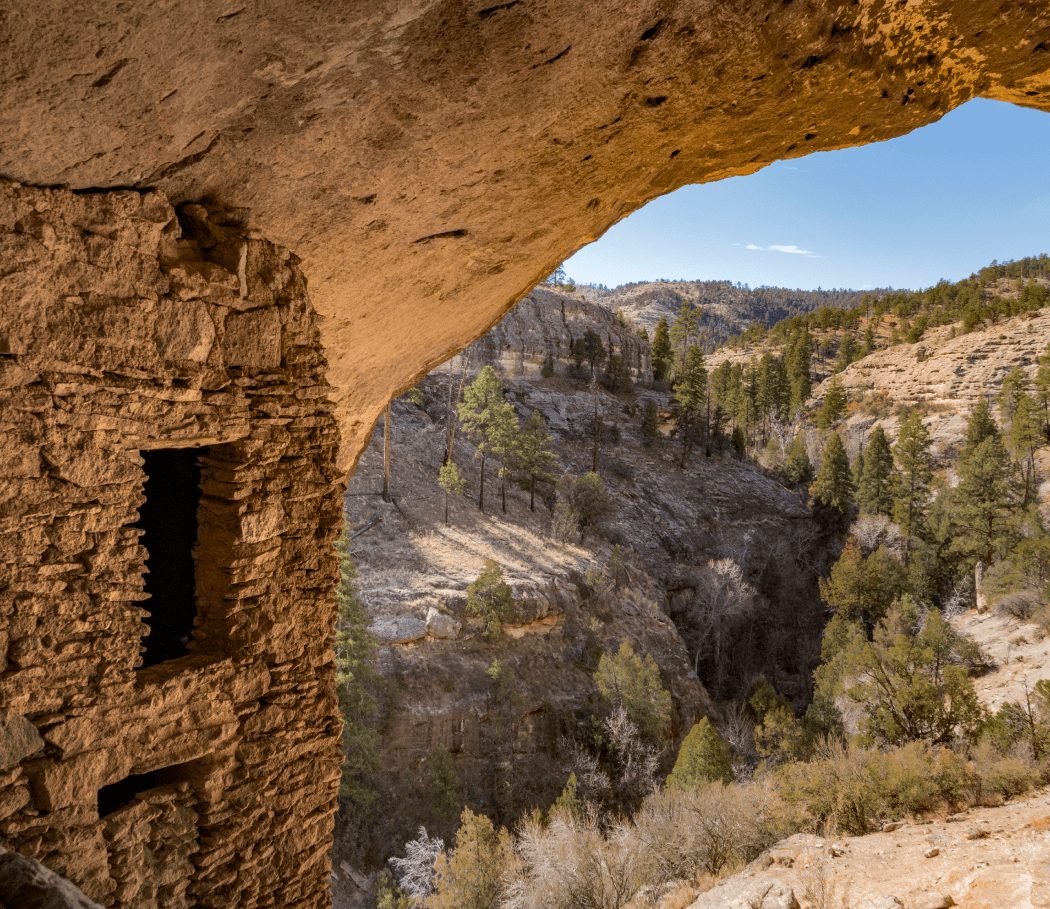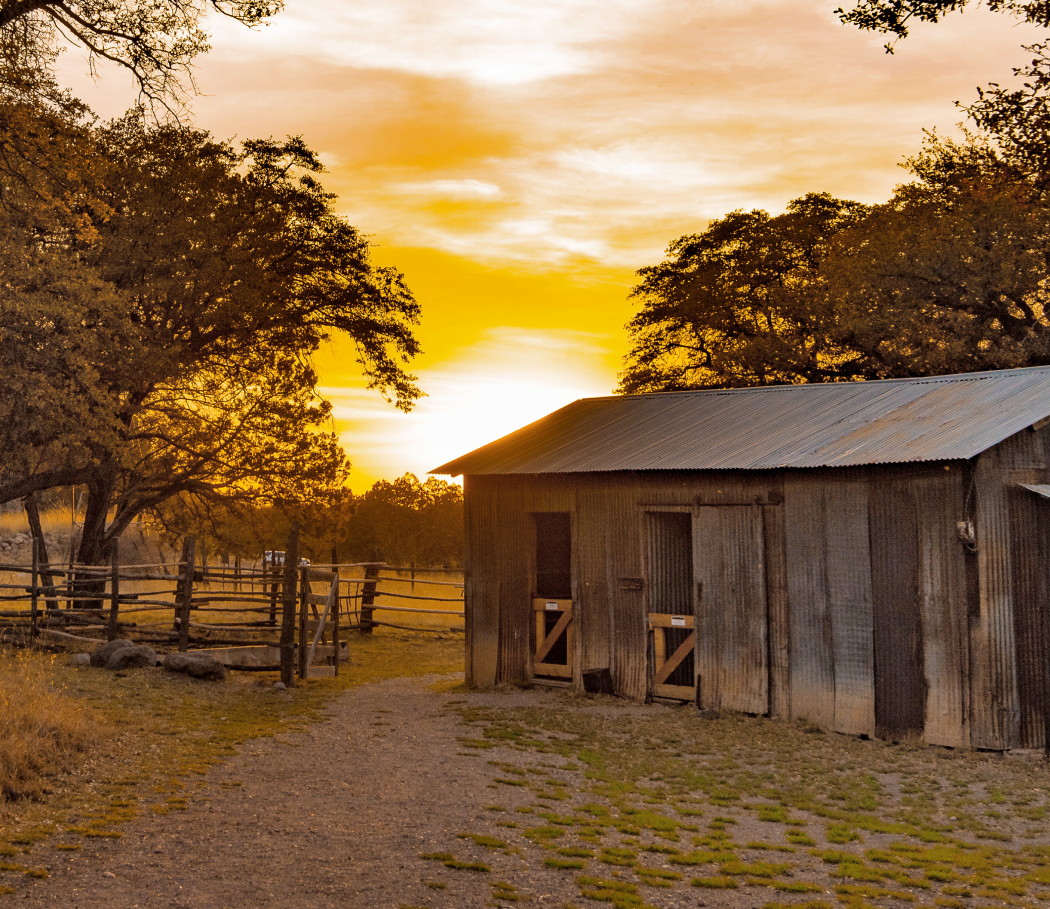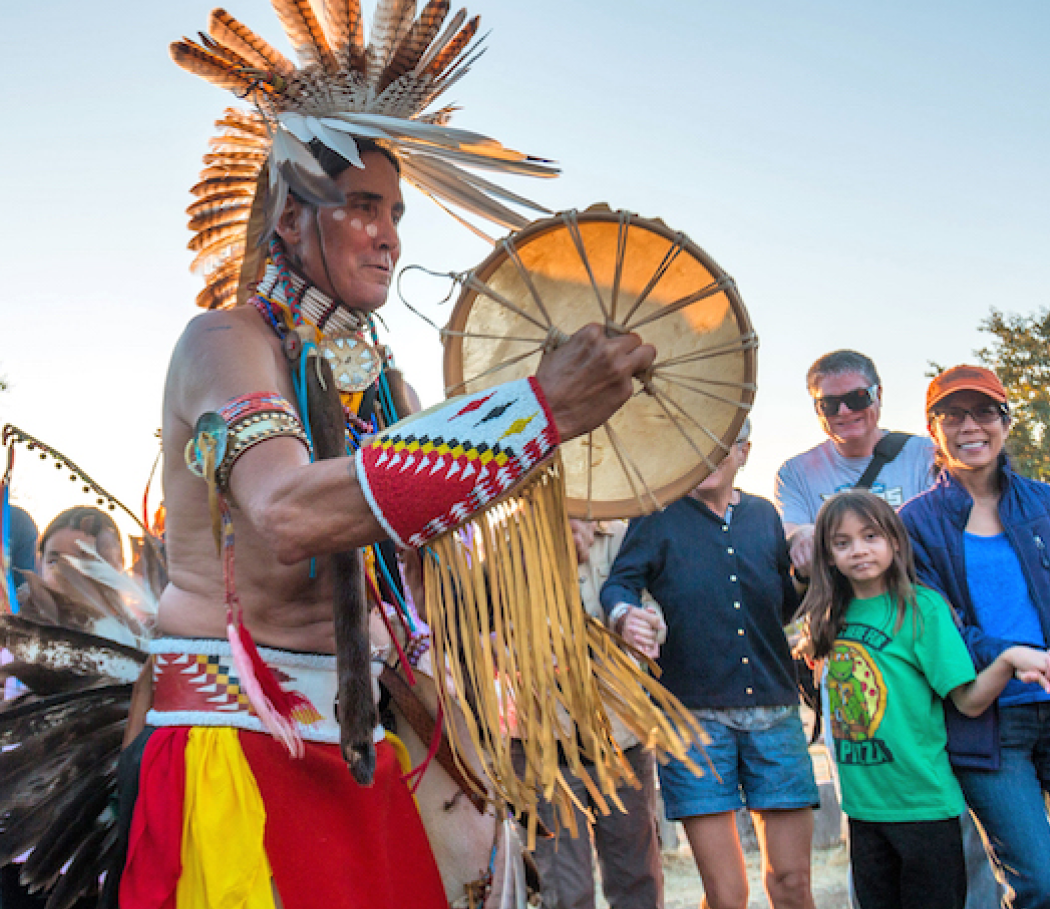The mighty saguaro (Carnegiea gigantea) is an icon of the American Southwest. Under a blazing sun, these majestic cacti can grow upwards of 50 feet if the conditions are right. A cursory glance with an untrained eye leaves one with the impression that these prickly giants are indestructible, however Arizona scientists investigating flower blooming patterns over the last several years have observed their sensitivity to climate change-induced weather extremes.
Saguaros are a keystone species, meaning that they provide essential resources such as flowers, fruit and nesting space to over 100 different animals and insects that coexist in the Sonoran Desert. Buds appear each spring in late March or early April, relying on a delicate balance of sunlight, rainfall, and heat to encourage the first flowers to bloom. They open each evening for several weeks, closing before the warmest part of the afternoon. The key pollinators of these towering cacti are bats, like the Mexican Long-tongued (Choeronycteris mexicana) and the Lesser Long-nosed (Leptonycteris curasoae) and moths that are active at night, although honeybees and a variety of birds also pay visits during the earlier part of the day.
Following flowering season, bright red fleshy fruits each containing up to 2000 small, black seeds will appear. These fruits are quickly eaten by anything that can get its claws or paws into them and the seeds distributed far and wide, becoming the next generation of giants if conditions are accommodating.
Saguaro flowering is a carefully organized event; buds first appear on the east side of the crown (the name for the top of the main stem,) then bloom counterclockwise in succession on the north, west, and southern sides in a phenomenon that has not been documented in any other plant thus far.
In a project that launched in the western Tucson Mountain District of Saguaro National Park in 2017, co-principal investigators, Don Swann and Theresa Foley set out to gain a better understanding of the flowering and fruiting behaviors of saguaros and how they might be changing in response to the environment.
Wildlife biologist, Don Swann, joined Saguaro National Park in 1993 and has been studying saguaros for the last 12 years. He became interested in phenology, or flowering behavior, after learning about the work of William D. Peachey, a research scientist and saguaro expert who has been studying the cacti in Saguaro East for decades.
“He’d been sending me his data and it was fascinating, so I thought it might be great to have another site over here, near the Tucson Mountains,” Swann explained.
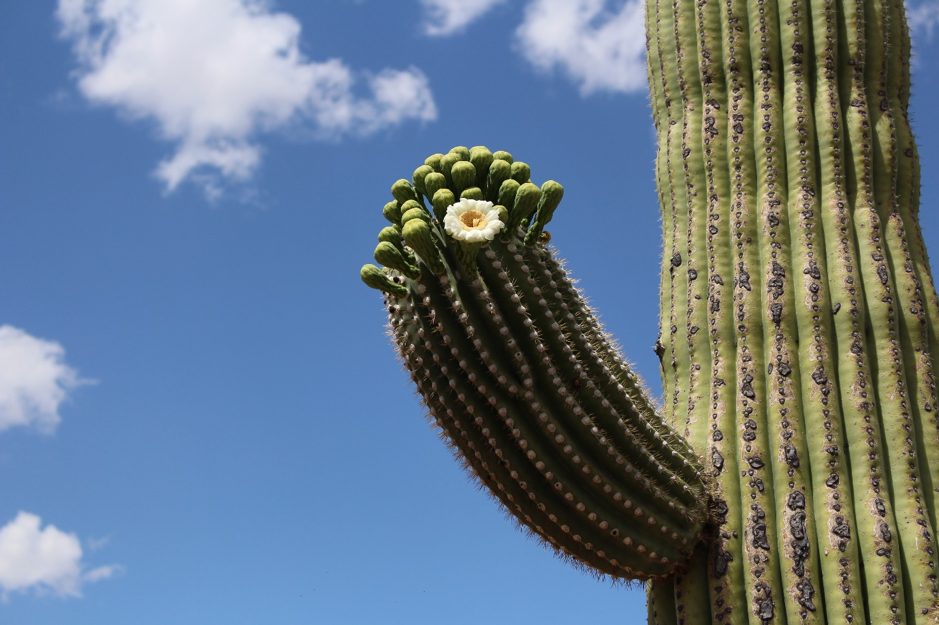
Peachey has been monitoring over 130 saguaros on a plot of land near Colossal Cave for the last 20 years, comparing bloom production with extreme weather events. These include very low rainfall as well as record-breaking temperatures – both high and low. We don’t typically think about freezes in the desert, but they do occur and wreak havoc on saguaros. The last major event occurred in 2011, with temperatures remaining below freezing for more than 36 hours. That year, Peachey saw virtually no blooms on his plot, which was mirrored in Saguaro West.
“I’ve also seen the same thing following very poor rains,” Swann explained. “For example, we’re expecting that this year is going to be quite different to last year where we had pretty good summer and winter rains.”
Saguaro blooms depend on winter rains. During the coolest season of the year, the cacti swell and store water, producing blooms several months later during the driest part of the year. These rains can be highly variable, but when a bad winter season is combined with weak summer monsoons, the saguaros are hardest hit.
“Looking at my data, I can’t say that it’s climate change, but I can say that the weather events exactly match the symptomology of climate change,” Peachey said.
Almost 40% of the years that Peachey has been monitoring blooms have experienced anomalous weather events. The resulting bloom production has been weak and there’s concern for what this might mean for the future of this slow-growing species.
Saguaros are vulnerable during their first few years of life before they’re able to store water in their stems. If they manage to survive, it’ll be another several decades before they produce their first flowers around age 35. Saguaros don’t start to put out arms until at least 60 or 70 years and can live upwards of 250 years.
This is one of the difficulties that scientists face when studying these slow-growers; a complete perspective of the lifecycle stretches well beyond the human lifespan. It is for this reason that Theresa Foley, an independent scientist studying saguaros alongside Swann, knew this project would be so important.
“There’s so much natural variability year to year,” said Foley. “That’s why we’re collecting all this data.”
Each day during the blooming season, Foley receives photographs from the citizen scientists who are out in the field using a 30-foot selfie stick to capture images of the saguaro crowns safely from the ground. She then manually counts the number of flowers on each of the saguaros.
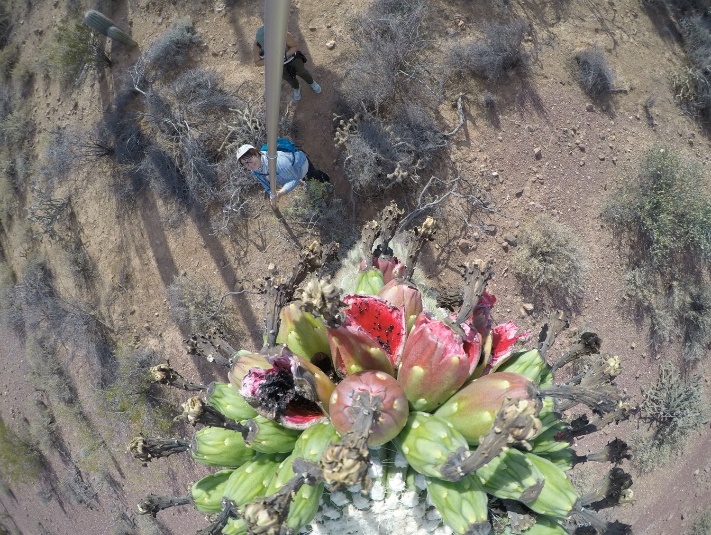
“Maybe one day artificial intelligence could do it, but the human eye is actually better,” Foley said, on how the flower numbers are extracted from the photographs.
There are 55 saguaros in the study site in Saguaro West and between 80 to 100 photographs taken each day during the counting season. As the weather heats up, this often means early starts for the park staff and volunteers who help with the data collection.
“We do a lot of different types of citizen science at the park,” said Swann. Ranging from large groups of inexperienced volunteers to those who are specialists including interns and staff, this project wouldn’t have been possible without them.
This year, the team at Saguaro West are experimenting with a new thermal camera to try to accurately determine the temperature at the crown, which is believed to be an important deciding factor – along with amount of precipitation and sunlight – in when and how much flowers bloom each season.
“We’re going to continue to experiment,” Swann said.
Some evidence suggests that saguaros are blooming earlier than in the past and if this is the case, this poses a threat to the pollinators that visit them.
Bats like the Lesser Long-nosed rely heavily on a pollination corridor of saguaros and other cacti in Arizona where they rear their young.
“They have to match the flower phenology when they’re ready to give birth because they’re stuck in one place for four to six weeks,” said wildlife biologist, Debbie Buecher.
Buecher, a bat expert, explained that climate change poses many questions in terms of how these and other key pollinators will adapt to changes in flower blooming.
“It’s hard to know how flexible they are,” Buecher said.
Lesser Long-nosed bats engage in a symbiotic relationship with saguaros. They benefit from an important food source from the flowers and fruit while also distributing seeds far and wide.
“They can forage 30 miles one way,” Buecher said, explaining that this benefits saguaros by ensuring that germlings aren’t having to compete with the parent plant after having fallen directly into the soil below, but rather stand a better chance of surviving elsewhere in the desert.
As well as temperature-induced changes to flower blooming, saguaros are under threat from buffelgrass. Native to Africa and Asia, buffelgrass (Pennisetum ciliare, Cenchrus ciliaris) was introduced to the United States in the early 20th century to feed livestock and reduce erosion in the arid lands. Hardy and drought-tolerant, buffelgrass has become a threat to saguaros that – like many species in the Sonoran Desert – are not adapted to survive wildfires.
“It provides fuel for fires between the desert plants and also competes with those plants for water,” Swann explained.
The park regularly removes large swathes of buffelgrass, but it’s a challenge keeping up with the high growth rate. Care must also be taken to prevent any damage to saguaros and other native plants in the process.
Recent evidence suggests that the Sonoran Desert is now facing a long-term drought that began in the 1990s. With last year the hottest on record in Tucson, scientists like Swann, Foley, and Peachey continue to be hard at work out in the field, seeing what’s next for the giants of the Southwest.
Guest Contributor Kat Kennedy, Doctoral Student at the University of Arizona
Desert vegetation surrounding the saguaro cactus in Saguaro National Park has been remarkably stable despite the presence of extreme weather over the past 30 years, according to a progress report on an ongoing research project, Three Decades of Ecological Change: the 2020 Saguaro Census, Phases I and II, supported by Western National Parks Association (WNPA).
The research, conducted by University of Arizona master’s candidate Emily Fule and park biologists Don Swann and Adam Springer, is part of the fourth survey associated with the Saguaro Census. They found that, since 1990, the total number of perennial plants has increased in both the Tucson Mountain District (TMD) and Rincon Mountain District (RMD) of Saguaro National Park, which is located in Pima County, Arizona.
Photo at right, Emily Fule, a master’s candidate at the University of Arizona, did most of the mapmaking and data management for the fourth survey of the Saguaro Census.
Both districts are separated geographically by the city of Tucson. The TMD, often referred to as Saguaro West, encompasses 24,818 acres of land, much of it designated as wilderness, while the RMD, or Saguaro East, contains 67,000 acres of wilderness.
The census, which takes place every 10 years, is a large-scale monitoring effort of the park’s signature plant, the majestic saguaro, whose towering bodies and upraised arms are as much a Southwestern cultural symbol as a staple of the desert landscape.
In 2020, the researchers found that the total number of individual plants, or stems, in the RMD nearly doubled to 5,056 from 2,659 in 1990, and in the TMD, the number of plants swelled to 4,394 from 2,822, or by 44 percent. Total plant cover also expanded significantly during the past three decades. In the RMD, cover extended to 15,500 square feet in 2020 from 11,300 square feet in 1990, and in the TMD, it jumped to 10,300 square feet from 9,000 square feet.
Although researchers observed a slight decline in the number of trees in the park, prickly pear and saguaros, as well as Brittlebush, a smaller perennial plant that favors warmer conditions, have greatly increased in number.
“There is some evidence that the long-term drought of the past 20 years is beginning to impact some species,” said Swann, “but the results also show how slowly desert plant communities change. Many plants that were present on the plots in 1990 are still there today.”
The saguaro surveys are taken on 45 plots, each approximately 10,000 square feet. Twenty plots are randomly located in the TMD, and 25 are located within saguaro habitat in the lower elevations of the RMD. Within these large plots are 1,100-square-foot subplots. During the surveys, the researchers record all plants on each subplot and map their cover area.

The 30 years of data suggest that long-term climate warming, suburban sprawl and random events, such as wildfire and above-normal precipitation, are significantly affecting growth patterns. All of the plants they mapped flourished after cattle grazing ended in the 1970s, and during wetter, cooler conditions throughout the 1980s and early 1990s. Since then, the park and desert Southwest have experienced extended long-term drought, punctuated by short wet periods.
Drier, warmer conditions have been favorable for prickly pear and cholla, but less so for shrubs. Researchers in 2010 discovered a surge in small subshrubs that resulted from heavy summer rains in 2006. Some individual plants were killed by a deep freeze in 2011, but the long-term effects, according to the researchers, appear to be relatively small.
“It’s a fascinating park if you’re a biologist,” said Swann. “It goes from low desert elevations, where it’s very hot and dry, to 9,000-foot elevations that are overspread with conifers. Being at the top of the Rincon Mountains is like being in Maine or Oregon.”
The research is taking place in the Sky Island region, isolated mountain ranges that are an extension of the Sierra Madre Mountains. The area contains a mix of dry desert and subtropical plants. A lot of these plants grow like saguaros, said Swann, and their reproduction and growth are tied to reliable summer rains.
While the general number of and cover for plants have ballooned in the park since the 1990s, there have been winners and losers among species. Among common trees, velvet mesquite and foothills palo verde have declined, while white-thorn acacia and wolfberry have prospered. Among shrubs, the density and cover for creosote, pelotazo or hoary abutilon, and jojoba have remained stable, while fairy duster and limber bush have bloomed.
Nearly all common subshrubs have expanded in range, except for triangle-leaf bursage, a common species in the TMD that has decreased slightly in cover and density. Brittlebush, which exploded in numbers in 2010 following heavy summer rains in 2006, decreased in number in both districts by 2020 but increased in cover.
“This project highlights the huge plant diversity that we can see in the low-elevation Sonoran Desert,” said Fule, the lead author of the report who did most of the field work, as well as the data management and mapmaking. “In only 1,100 square feet, it was common to find over 20 different species, and on several plots we found as many as 30 species.”

Among cacti and succulents, prickly pear stands out as a dominant plant, more than doubling in cover in the RMD since 1990. Pincushion cacti have doubled in the same period, while the barrel cactus has declined by more than half. From 1990 to 2020, the overall cover of three common cholla species increased mainly because of an eruption of jumping cholla.
Plant communities, however, aren’t shaped by just large-scale, long-term environmental change. Rare events, such as wildfires, freezes, windstorms, and droughts, can spur their growth or hasten their decline. Since 1990, the park’s plants have been met with three very wet winters, a summer of torrential rain in 2006, and a deep freeze in 2011 that defied the prolonged drought and historically high temperatures.
During that wet summer in 2006, subshrubs, such as Brittlebush, multiplied to such an extent that surveyors in 2010 had to modify their sampling methods to accurately map the plants that were by then 3- to 4-years-old. The freeze in 2011 was a sudden reversal of fortune for many of the cold-intolerant Brittlebush, which died off in significant numbers. Overall cover did expand, however, as they continued to mature.
Indigenous peoples drew sustenance from saguaros long before the cacti became a celebrated symbol of the Southwest. The Tohono O’odham, or Desert People, have lived in the Sonoran Desert for thousands of years. Their harvesting of the Saguaro fruit is a centuries-old practice that reaffirms their relationship with their traditional environment. They use the flowers, fruit, seeds, thorns, burls or boots, and ribs of the saguaro for food, ceremonies, fiber, manufacture and trade, and they use the fruit and seeds to make a ceremonial wine that is used in the Navai’t, and the Vikita, or harvest ceremony.
Saguaros are a master of survival and they reproduce for more than 100 years, but the species doesn’t produce a fresh crop every year. They like cool, wet conditions, and are especially resilient once they mature, but climate-induced drought over the long-term may affect their numbers in the park.
“Adult plants tend to survive and be much more resilient to drought than young plants,” said Swann. “Saguaros are a good case study of this. Once they reach a certain age when they can store water, it’s incredibly resilient to change and drought, whereas the new ones are decreasing in number. We’re not alarmed by this development, but we’re keeping an eye on it.”
The park’s evolving vegetation has also affected two species of deer in the park—white tail deer and mule deer, which like to eat saguaro flesh that hoards water. White tail deer tend to inhabit higher elevations and like to hide in the forest, while mule deer roam the grasslands and desert. Over the past 30 years, the researchers have seen a shift in behavior.
“In the 1970s, the white tail deer inhabited elevations at 5,000 to 6,000 feet and their presence in the desert was unusual,” said Swann. “Now they’ve moved into the desert where plants provide cover for them. Since mule deer can’t see as far, they’re uncomfortable with the plant cover.”
Swann called the Saguaro Census a “partnership of generations.” He said the team of researchers, which includes 500 volunteers, is “grateful” for the support from WNPA and the Friends of Saguaro National Park that is allowing them to continue the 80-year-old program.
“Saguaro National Park is particularly biologically diverse and has a rich scientific legacy that we feel responsible for continuing,” he said. “A lot of people who started the studies that I’m working on have been dead for a long time. Like them, I hope that I become a conduit for young people to continue these studies long after I’m gone.”
By Dave DeFusco
A team of National Park Service researchers will study the biological diversity of Saguaro National Park’s “sky island” assisted by a $10,000 grant from the Western National Parks Association.
Photo at right, Botanist Dan Beckman, beside a Cochise adder’s mouth orchid, is co-leading the study. photo courtesy of Tony Palmer, NPS
The grant was supported by a $5,000 gift from Wild Tribute, which donates to organizations that support national parks and public lands, and the agencies that oversee their legacy. Ben Kieffner, co-founder of Wild Tribute, said the Saguaro NP research aligns with the company’s goal of donating 4 percent of its proceeds to protect historic and wild places.
“It’s enormously important that researchers have the resources and capacity to protect this nation’s biodiversity, which is threatened by climate change,” said Kieffner. “We feel it’s our responsibility at Wild Tribute to be part of the solution since we all share the same Earth.”
The Saguaro NP research will provide baseline data on the park’s nearly 1,200 species of native plants in the Rincon Mountain District, located in Pima County, Arizona. The park contains 67,000 acres of wilderness spanning desert to forest.
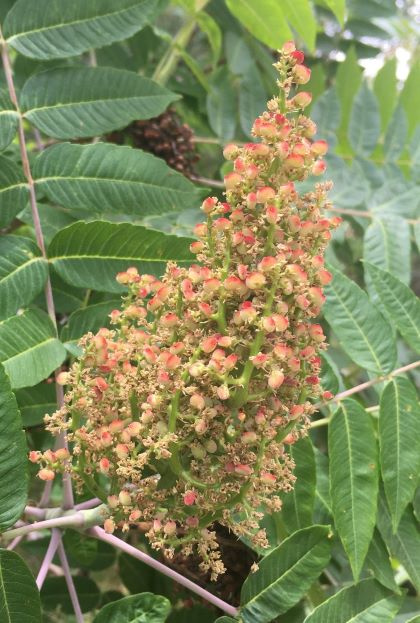
In this area, species from the Rocky Mountains and the subtropics intermingle, and many of the high-elevation, moisture-loving species are utilizing rare microhabitats in an otherwise dry environment where climate change, drought-induced wildfires, and decreasing snowpack could eventually eradicate them if measures aren’t taken to preserve them.
The moisture-loving plants considered most vulnerable to climate change include Thurber’s bog orchid (Platanthera limosa), known to be in only one spring-fed, high-elevation drainage; smooth sumac (Rhus glabra), known to exist in only one localized area of shallow groundwater; and giant chain fern (Woodwardia fimbriata), known to inhabit only a single mid-elevation spring. Other species, like white panicle aster (Symphyotrichum lanceolatum var. hesperium), have not been sighted in targeted searches and may have already died out.
“It’s worth underscoring how special the biodiversity of the Rincon Mountains is, as well as how threatened it is by climate change and the associated wildfire risk,” said Dan Beckman, a botanist who is co-leading the yearlong study with park biologist Don Swann. “As a Madrean ‘sky island’ range, the Rincons contain many species that are extremely rare in the US, and also represent a fascinating confluence of disparate floristic influences.”
The team will employ survey methods developed over the past five years in remote areas of the park that will identify unique plant communities and biodiversity hotspots. The hope is that their findings will help the park’s fire management team in targeting specific areas for prescribed burning, which will protect highly valued and rare biodiversity.
The researchers will log georeferenced occurrence data for locally rare or never-recorded plant species through collections and photo records. Each collection or photo record will include coordinates, habitat description, the presence of other species, and a description of the plant population.
“It’s increasingly clear that climate change represents an existential challenge to the resources that national parks were created to protect,” said Swann. “It’s also becoming clear that we need new tools and an expanded role for the community if we have any hope in protecting these resources for future generations.”
